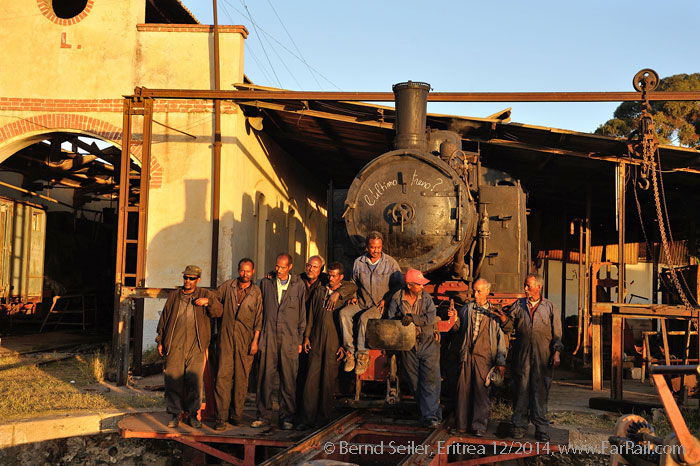
In December last year we chalked on the smokebox door of a 442, “ l’ultimo treno? ” (The last train?). Unfortunately we now need to change the question mark to a full stop.

The state railway of Eritrea told me that they’re unable to run any trains, no matter which kind. They came up with a bundle of “reasons”, but those reasons are so lightweight that I even don’t want to repeat them here. They are poorly hidden excuses for saying, “we do not want to run any trains”. Technically it would be no problem to carry out our programme, but this isn’t what they want to do. They aim for higher targets.
The only option I can offer is a trip into a warmer climate while the weather is quite harsh in northern Europe. If you want to see this fascinating country, the old railway line to Keren, the camel market there, the depot with its sleeping steam and Krupp diesel locomotives as well as Fiat railcars, have stone oven pizza and cappuccino in a street coffee bar and if you want to say farewell, you’re most welcome in the warmer part of the world:
|
Date |
Itinerary |
|
16.01. |
Flight to Asmara, flights can be arranged by FarRail Tours |
|
17.01. |
Early morning arrival in Asmara, transfer to our hotel and take a rest. After lunch we’ll go by bus to Keren, Hotel in Keren |
|
18.01. |
In the morning visit to the camel market and the general market, In the afternoon we’ll visit the two stations in the city, Hotel in Keren. |
|
19.01. |
Today we’ll go by 4WD cars to Asmara, using the old embankment of the railway, driving through tunnels and over small bridges. It will take us about 8 hours, to complete the journey over this once scenic line. Hotel in Asmara. |
|
20.01. |
In the morning we’ll visit some of the highlights of Asmara, for instance, the FIAT Tagliero filling station, a masterpiece of Art Dèco, the cathedral, the central mosque and the former opera building. In the afternoon we’ll visit the railway station and try to arrange a small line-up of locomotives in front of the shed. The afternoon light should be perfect for this shot. Hotels in Asmara. |
|
21.01. |
We’ll visit the famous recycling market. This market is the complete opposite of the quiet railway yard: here private enterprise dominates! From every thinkable material and structure, they’re remodelling new items for daily use. They hammer, saw, drill, weld and paint at every corner of the market. In one part they mill chilli, you can’t miss it ... In the afternoon we’ll first visit the brewery of Asmara and, if you’re still able to walk straight, we’ll have a look at the remains of 30 years of independence war – the tank cemetery. In the late afternoon we’ll continue to the Italian, military (WW II) and Jewish cemeteries nearby. Hotels in Asmara |
|
22.01. |
Our tour bus will bring us to the fantastic mountain scenery at Shegereni, Unfortunately, with an idle laying railway line. Around noon we’ll continue to Dekemhare and to the valley of the gigantic trees. One of these trees is shown on the back of the five Nakfa banknote. Evening return to Asmara to our hotels. |
|
23.01. |
Because we’ll be a very small group only, we will have a chance to visit the Synagoge of Asmara and meet the last Jew of the town. Afterwards we’ll make a tour to the cinemas of Asmara, everyone a sight of Art Déco. There are not many cities in Africa which can compete with the density of cinemas. Hotels in Asmara |
|
24.01. |
Return flight, departure in the early morning, arrival in Europe at the same day.. |
Dahlak island extension possible, please enquire.
| Eritrea | ||
| The End of the Line | 10 to 18 participants | £870 |
| 16.01.2016 – 24.01.2016 | 6 to 9 participants | £1,040 |
| Single room surcharge | £215 | |
| Registration Deadline: 06.12.2015 | ||
The price includes:
Not included:
This used to be the original program:
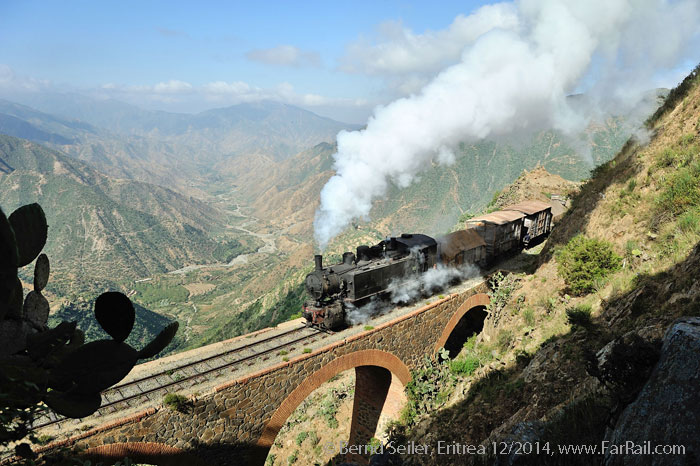
Having said this, you shouldn’t be concerned about lethargy or reluctance when you need something special, although they earn the same money, even if they don’t move. This amount can be so little that they rely almost entirely on the help Eritreans abroad send to their families. If they do something, but do it the wrong way, they may even lose their job or, even worse, get a national call – which everyone tries to avoid. So arranging a demanding tour can be somewhat difficult, especially since the former General Manager, Amanuel, died.

Getting confirmation for the tour isn’t expected to come in before September 2015. The Eritrean government has big plans about the future of the line. As Amanuel already said, they want to connect the mines near Bisha to the railway. There are several projects, and some of them could require the entire available workforce. Hence they do not want to run a tour and stop the construction, if it has finally started after so many years of discussions and negotiations.
However, we’ll try the best possible under the current circumstances. Although I included some double headers on the last tour, there is still some coal left and they promised not to use it for any purpose other than our tour. The line has been rebuilt. In February 2015 a diesel with a flat wagon from Mai Atal and a cold steam loco reached Massawa and came back to Asmara, the diesel hauled the cold steam loco. The locos went there to celebrate the victory over
The capital of
Because Lufthansa cancelled their flights to
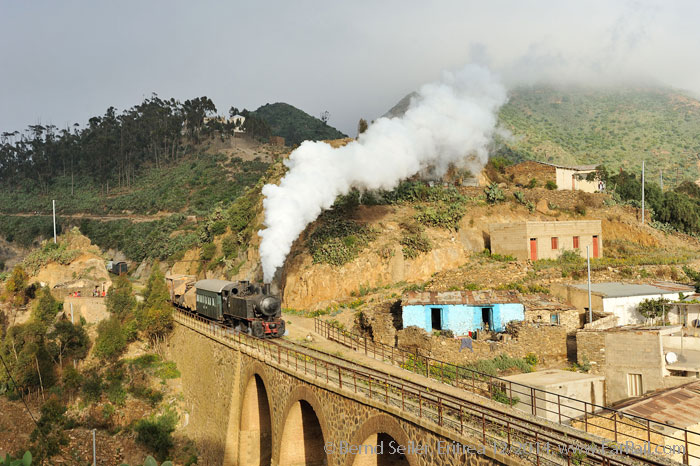
|
Date |
outdated Itinerary |
|
16.01.2016 |
Flight to |
|
17.01.2016 |
Early morning arrival in |
|
18.01.2016 |
Visit to the camel market, the general market and the two stations in the city, in the afternoon we’ll go by 4WD cars to |
|
19.01.2016 |
In the morning we’ll visit the depot and see our loco being prepared for the day. In the late morning we’ve planned a city tour through |
|
20.01.2016 |
In the morning we go by bus to Embatkalla, where our train is waiting. Around 08.30 hrs we’ll set off for Algenet (km 87). Our loco will roll back to the road for a water supply while we go by bus to Ghinda for lunch. In the afternoon we’ll return to Algenet, around 14.00 hrs, we continue the ascent to Nefasit (arrival around 17.30 hrs). By bus back to our hotel in |
|
21.01.2016 |
We’ll return to Nefasit in the morning, where our train with 440 008 is waiting for us. We’ll take some nice shots in and around Nefasit (08.15 – 10.00 am), then we’ll go up to Lessa, where we’ll have a lunch stop in the middle of nowhere while our locomotive continues light engine to Arbaroba for water supply. After it is back we’ll continue to Arbaroba (arrival around 17:30 hrs). From there our buses will take us back to our hotel in |
|
22.01.2016 |
Today we’ll see the final ascent of 440 008 with its four freight wagons, starting from Arbaroba at 07.30 in the morning, arriving |
|
23.01.2016 |
This day has an optional steam programme, depending on there still being some coal. If there is no coal left, we’ll take a visit to the brewery, the tank cemetery, the Italian cemetery, the cathedral and, last but not least, the recycling market. Of course, we’re hoping for option “coal available”. This would lead us to a big Mallet, class 442, and a passenger train. The plan “coal” should allow us to haul a passenger train from Shegereni, tunnel 23, up to |
|
24.01.2016 |
Return flight, departure in the early morning, arrival in |
A video from our December 2014 tour can be seen here: https://www.youtube.com/watch?v=_aZ_Xo0_Qew
The line runs from Massawa harbour through relatively flat coastal land, with a desert character up to Mai Atal (km 29). After Mai Atal several dry riverbeds are crossed by long stone arched viaducts before the ascent becomes noticeable. Before Ghinda (70 km, approx. 1,000m above sea level) there are the first tunnels. Then the really breathtaking part of the line starts, with many tunnels, bends, bridges and retaining walls. The summit is reached at 2,430m above sea level between Arbaroba and
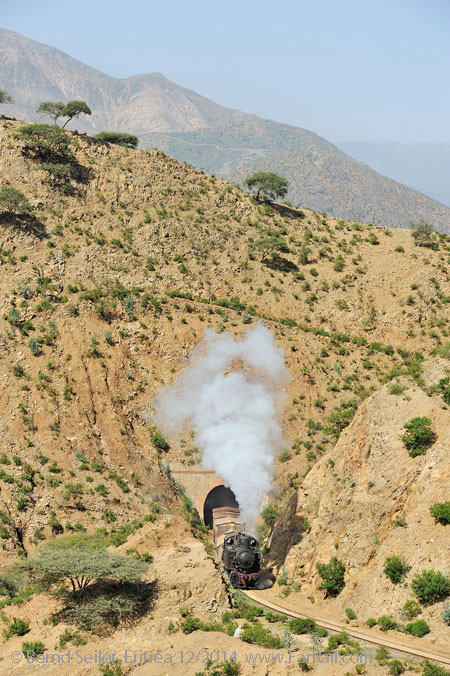
The railway, as already mentioned, was built through some difficult terrain. There are photo locations which only have room for around 15 photographers. In these cases we’ll make several run pasts until everyone has got the shot. This also means that some discipline is required. Nobody should get in the way of others, even if their location is supposedly better. If this is indeed the case other people will feel the same and the position of the shot can be altered. Our time for photography is naturally limited by the shadows of the mountains in early morning and late afternoon and by the harsh light at midday. We won’t waste energy trying to get useful shots in the midday sun. Our time is also limited by the technical limitations of the locomotives. They are not in the best state and we face a risk that such a loco can fail or delay our train with no chance for any kind of compensation. At least you should expect several stops on the line to raise steam pressure.
Please don’t get carried away with the scenery, we are in the mountains. One wrong step can lead to a fall that can seriously endanger your health or even your life. If you take part in this tour you do so at your own risk, particularly when getting out of the train along the line and moving through the terrain. If you aren’t up to reaching a certain photo point, for example because the wine the night before was very nice, please stay in the train! There will be other opportunities that can be reached more easily and will be just as good.
After a long search we found some original head lamps. Although they might not look nice for the taste of some Europeans we’ll place them sometimes on the buffer beam of a locomotive.
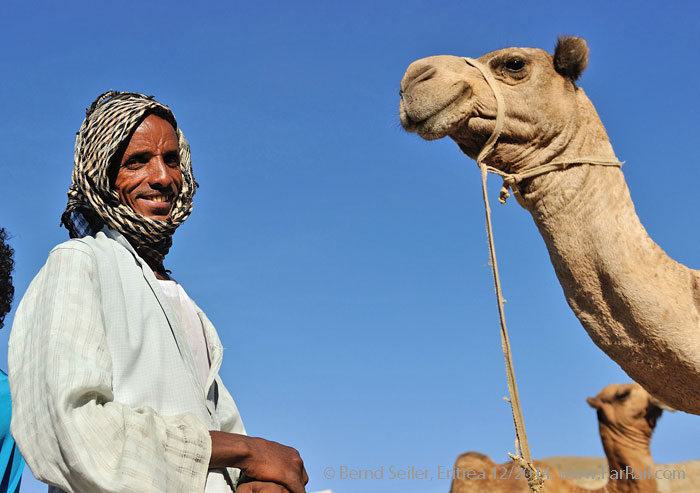
Keren is a fascinating city, surrounded by mountains. Only a few tourists go there, so you can see authentic African life almost everywhere. The city is rich in mosques and churches and merges several architectural styles. Some of the most interesting events are the camel, the cattle and the general market, the latter one usually held in a dry river bed. The hustle and bustle of these colourful markets is remarkable. But around midday the activities fade out and the markets disappear, leaving empty places and a dry river bed. Keren is well worth a visit, especially once you've flown so far already. It will widen your horizon about
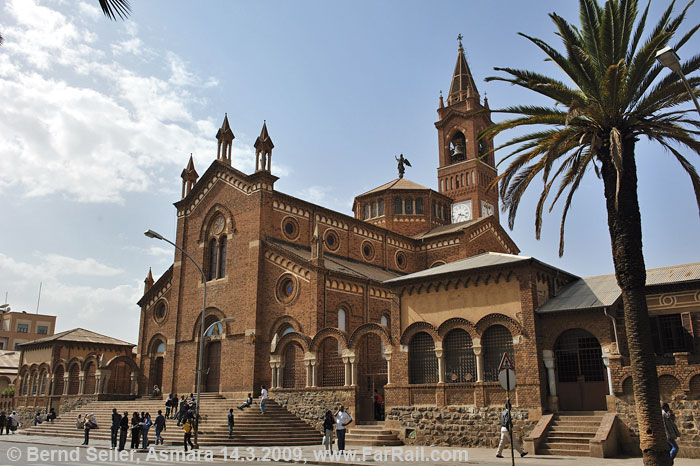
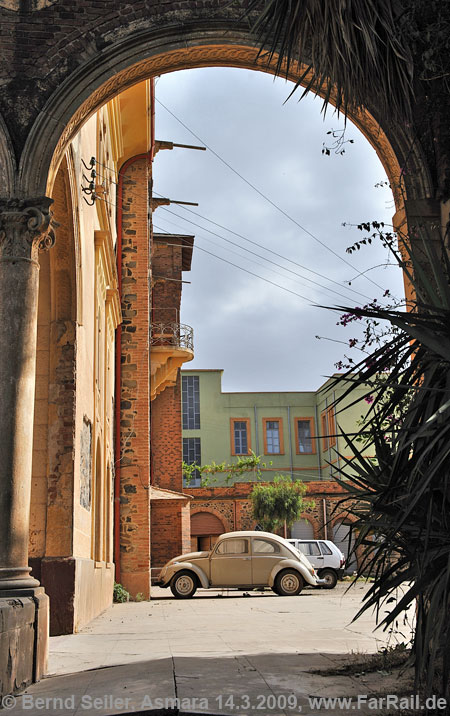
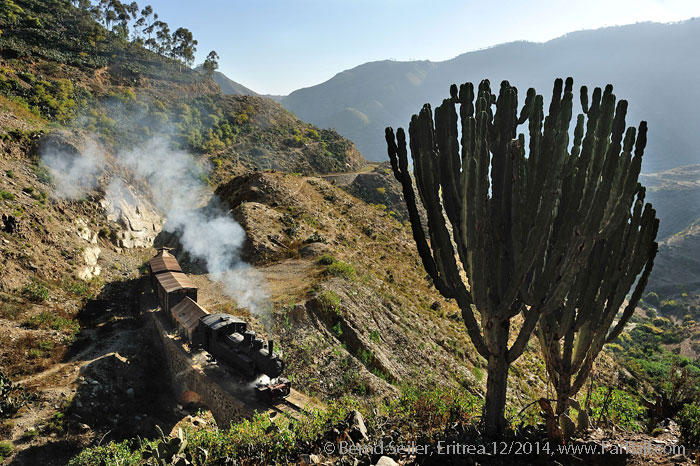
In
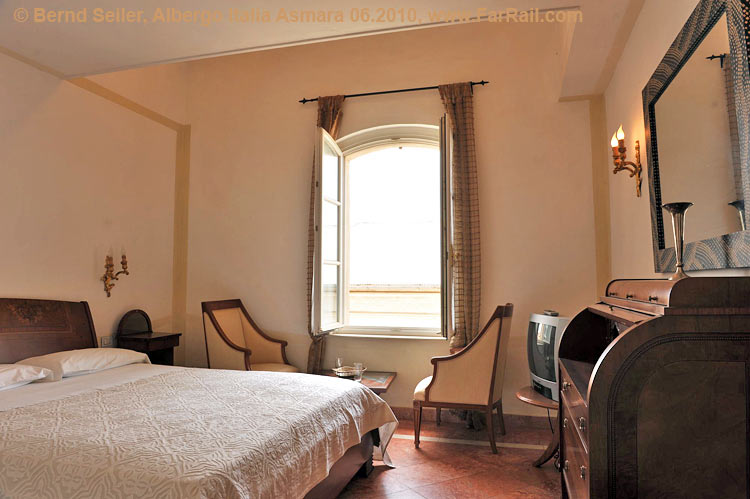
We expect temperatures of 25 degrees in
Below 2,000 m height there is a risk of malaria throughout the year. The best defence against malaria is to avoid getting bitten by mosquitoes, so it’s recommended you wear long clothing in the evening. Long clothing is also a cultural necessity as half of the population is Muslim (the other half Christian). Short trousers are unsuitable for wearing in public even if it’s really hot. Short trousers are popular among the poorest of the poor when they need to do a hard job as well as by soldiers of invading western troops, neither of which you should even think about copying. Also short trousers indicate that you don’t care for their culture and you’re somewhat arrogant. If you see some foreign tourists wearing short trousers you can only shake your head.

The electricity supply (220 Volts) is reasonably dependable due to generators in our hotels; often you will need an adaptor for your plugs. There is a mobile phone network available but no western company signed a roaming contract so far. That’s why you can’t use the mobile network of
You should take all the usual precautions for a stay in the tropics if you prefer a trouble free trip rather than a hospital stay. Basic rules like only eating peeled and/or cooked food and not drinking tap water should be abided by. Besides the local food, which you really should try, many Italian influences remain from the colonial time. It’s no problem getting a pizza in Asmara. Breakfast (except early morning departures) and dinner are planned in our hotel or restaurants not far from our hotels while lunch is a small snack which will be served in the train. Cold drinks can also be bought in the train for very reasonable prices.
We can’t guarantee that a certain locomotive is serviceable but we can guarantee there will be sufficient locomotives to haul all planned trains with steam.
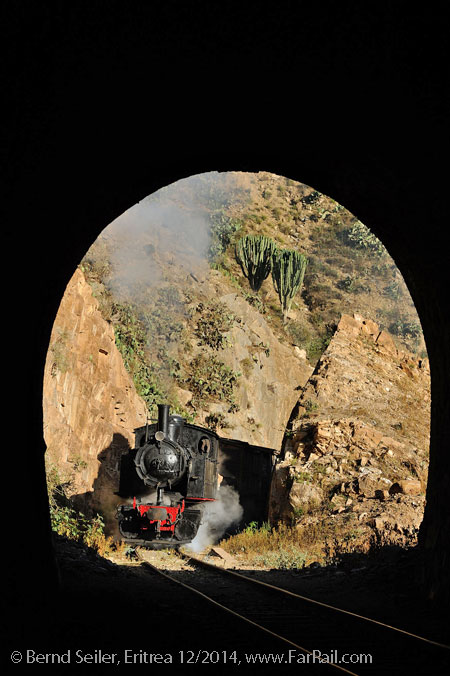
We know the technical state of the Littorina, the "Litorinella" and the Krupp diesel loco only too well to risk adding one of these vehicles to our programme. The chance of using these diesels according to a plan is less than 30%. The risk of failures – if you get them out of the station of
The railwaymen have already entertained several groups of railway enthusiasts and know what we want and how we want it. They are even used to the high demands of a FarRail Tours charter train event. Even so, we are in

The line between Baresa and Massawa and, later on, between Ghinda and Embatkalla was partly destroyed by severe weather conditions in 2012, 2013 and 2014. The damages are all repaired by now, but you should keep in mind that weather conditions may damage any part of the line with no chance to repair the section in time (or at all). But they'll try their best and even use the army to rebuild the line, in such cases, in time.
Hygienic and environmental standards in
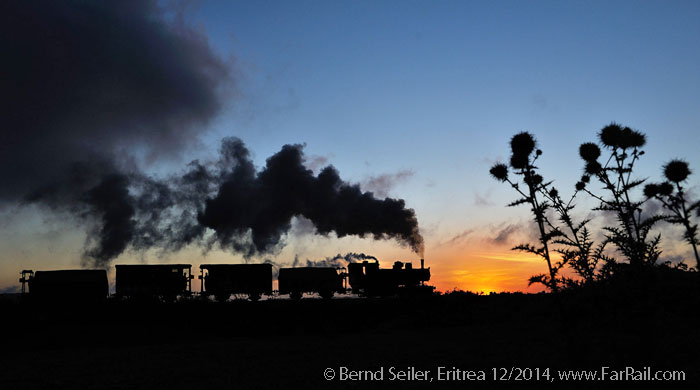
The price includes:
Not included:
A video from our December 2014 tour can be seen here: https://www.youtube.com/watch?v=_aZ_Xo0_Qew
